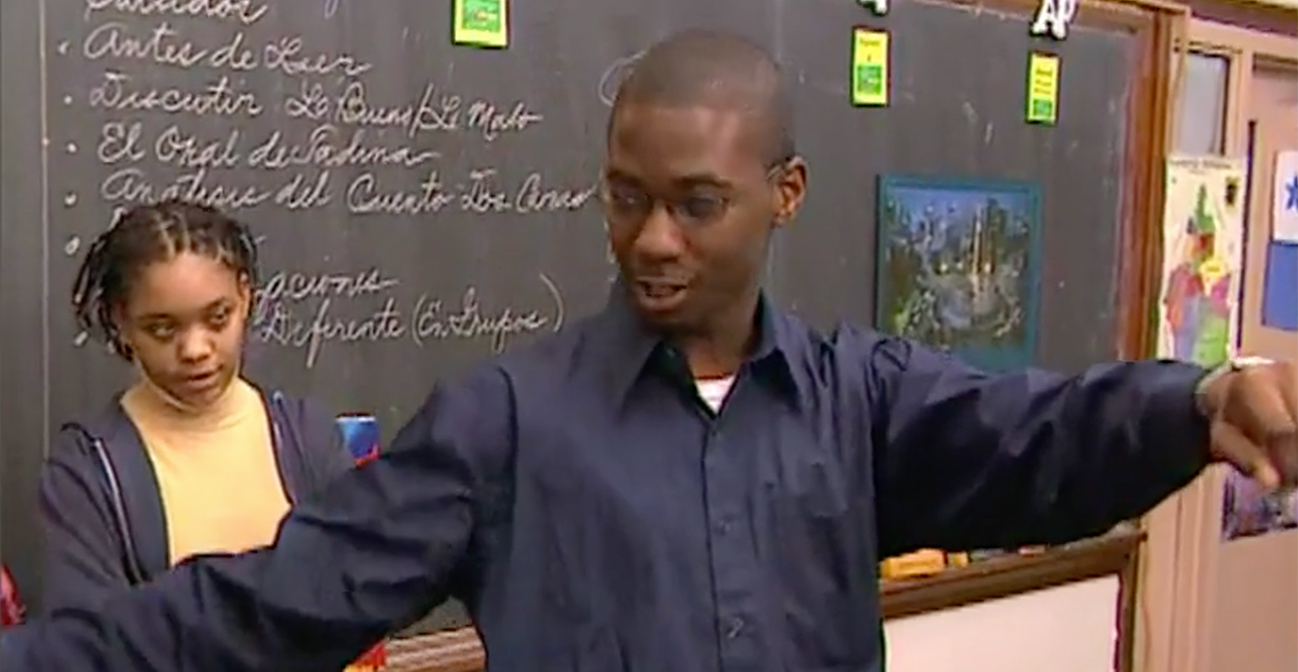Join us for conversations that inspire, recognize, and encourage innovation and best practices in the education profession.
Available on Apple Podcasts, Spotify, Google Podcasts, and more.

CLASSROOM AT A GLANCE
Teacher
Barbara Pope Bennett
Language
Spanish III (IB)
Grades
11
School
Benjamin Banneker Academic High School, Washington, D.C.
Lesson Date
December 12
Class Size
23
Schedule
45-90 minutes; alternate week block schedule*
In this lesson, students discuss Dos caras (Two faces), by New Mexico author Sabine Ulibarri. Having read the story in previous classes, the students begin by summarizing and interpreting the story and its moral message. To show they understood what they have read, students dramatize scenes from Dos caras, then work in groups to create alternate endings. The class also listens to a student’s oral presentation about a local artist.
Communication: Interpersonal, Interpretive, Presentational
Cultures: Products
Connections: Making Connections, Acquiring Information
Communities: School and Community
*The class meets for 45-55 minutes daily every other week. On the alternate week, the class meets three days for 55 minutes each and one day for 90 minutes.
heritage speaker
A heritage speaker is a student who is exposed to a language other than English at home. Heritage speakers can be categorized based on the prominence and development of the heritage language in the student’s daily life. Some students have full oral fluency and literacy in the home language; others may have full oral fluency but their written literacy was not developed because they were schooled in English. Another group of students — typically third- or fourth-generation — can speak to a limited degree but cannot express themselves on a wide range of topics. Students from any of these categories may also have gaps in knowledge about their cultural heritage. Teachers who have heritage speakers of the target language in their class should assess which proficiencies need to be maintained and which need to be developed further. See also native speaker.
negotiation of meaning
In this process, teachers and students try to convey information to one another and reach mutual comprehension through restating, clarifying, and confirming information. The teacher may help students get started or work through a stumbling block using linguistic and other approaches.
proficiency level
Proficiency describes how well a person functions in a language. The American Council on the Teaching of Foreign Languages further defines proficiency with a set of guidelines for assessing communicative abilities. The guidelines cover how an individual performs across three criteria: function, content/context, and accuracy. When combined, these criteria determine the student’s communicative ability to be Novice, Intermediate, Advanced, or Superior. See also performance level.
Reflect on Your Practice
As you reflect on these questions, write down your responses or discuss them as a group.
Watch Other Videos
Watch other videos in the Teaching Foreign Languages K-12 library for more examples of teaching methodologies like those you’ve just seen. Note: All videos in this series are subtitled in English.
Exploring New Directions (Chinese) shows students making oral presentations based on their interpretations of literary texts, and Interpreting La Belle et la Bête (French) features students interpreting a cultural product (a film) and discussing its moral message.
Put It Into Practice
Try these ideas in your classroom. Where it’s not already evident, reflect on how to adapt an idea that targets one performance range for application to other performance ranges.
World-Readiness Standards for Learning Languages
The World-Readiness Standards for Learning Languages create a roadmap to guide learners to develop competence to communicate effectively and interact with cultural understanding. This lesson correlates to the following Standards:
Interpersonal Communication
Interpretive Communication
Presentational Communication
Relating Cultural Products to Perspectives
Connections
Connect with other disciplines and acquire information and diverse perspectives in order to use the language to function in academic and career-related situations
Making Connections
Acquiring Information and Diverse Perspectives
Communities
Communicate and interact with cultural competence in order to participate in multilingual communities at home and around the world
School and Global Communities
Curriculum References
Benjamin Banneker Academic High School: IB Program
International Baccalaureate Organization
Barbara Pope Bennett’s Additional Resources
Web Resources:
CNN en Español
The Spanish-language version of the popular news site
Hola.com
Entertainment and news updates in Spanish